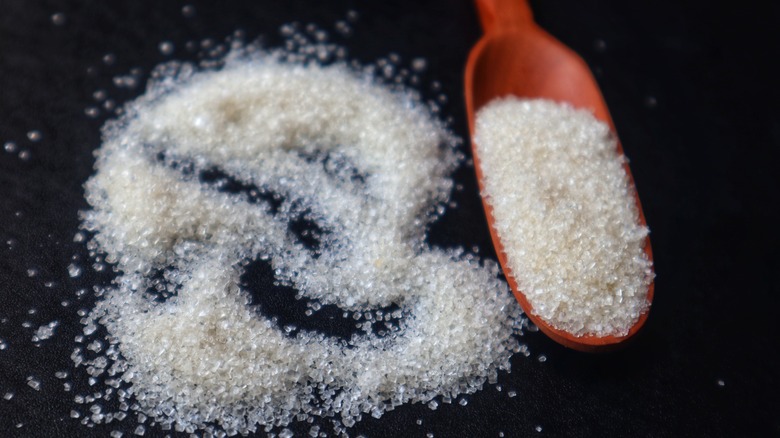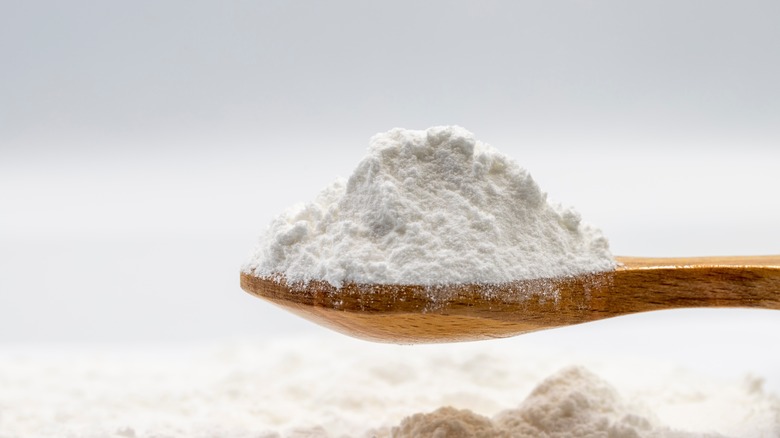What Happens If You Substitute Powdered Sugar With Granulated
Granulated sugar is a staple ingredient for any home baker. You'll find it in most sweet baked goods as it, well, sweetens things up. Beyond that, granulated sugar helps with creating tenderness in your favorite dessert by absorbing water from tough proteins and starches. It isn't good for just any dessert, though; sometimes, powdered sugar is the way to go, specifically for something like royal icing. But if granulated is all you've got, don't worry: You can certainly follow through with this substitute, just be mindful that the texture of your icing might be a bit off.
Powdered sugar is just what it sounds like: Sugar in powdered form. To make it, granulated sugar is simply ground until into a powder. Just like granulated sugar, its main purpose is to sweeten things up, but perhaps more importantly, powdered sugar dissolves easily, making it ideal for the perfect icing consistency since it isn't likely to clump up. Granulated sugar melts when it reaches 367 degrees Fahrenheit, which means that if it's used in a room temperature icing recipe it won't be as smooth as a powdered sugar icing would be. If you decide to use this substitute, you'll want to use a smaller amount of granulated sugar (about 1 cup for every 1 ¾ cup of powdered sugar) to minimize the graininess as much as possible.
Other substitutes for powdered sugar
If grainy icing doesn't sound appealing, there are plenty of other substitutions for powdered sugar. Perhaps the most popular is making your own powdered sugar, which is actually easier than you might have thought. While it is technically confectioners' sugar due to the presence of cornstarch, you can do this at home by blending granulated sugar with cornstarch until it reaches that powdery consistency. It should only take about 30 seconds in a blender until the mixture has become fluffy and soft.The cornstarch prevents it from clumping up over time, but you may want to sift your homemade sugar before using it to be sure.
Coconut sugar has a lower glycemic index than most sugars and can also be used as a substitute for powdered sugar. If you happen to have this on hand, you can blend it with cornstarch to achieve a similar powdered consistency. For chocolate desserts, try using hot cocoa powder, but grind it first to achieve the proper consistency. And if you've got it on hand, dry milk powder is another solution, though you might want to add a bit of sweetener to bring out that missing sweetness.

